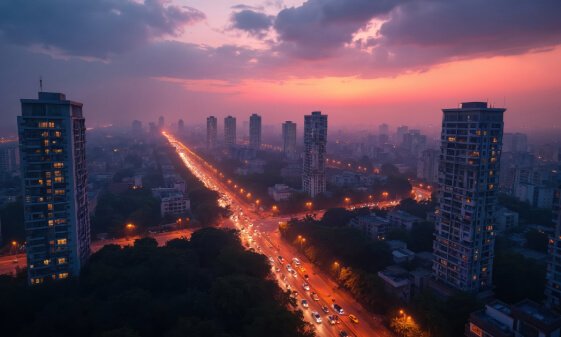Delhi’s Fuel Ban on Older Vehicles Misses the Real Polluters
Age-Based Rule Ignores Actual Emissions, Penalises Well-Maintained Older Vehicles
July 1, 2025
Starting July 1, petrol pumps in Delhi have been told to stop giving fuel to diesel vehicles older than 10 years and petrol vehicles older than 15 years. These vehicles can also be impounded. Though the move is meant to reduce air pollution, it is based on the idea that the age of a vehicle shows how much it pollutes. This treats all old vehicles the same, even though many may be well-maintained or fitted with better technology to reduce emissions.
Enforced by the Commission for Air Quality Management and various state departments, the ban follows an earlier order regarding End of Life (EoL) vehicles. To ensure compliance, the Delhi Police and Transport Department are deploying officers to 350 designated fuel stations across the city, as reported by Hindustan Times. Personnel are instructed to deny fuel to EoL vehicles and issue challans or impound vehicles if necessary.
The Municipal Corporation of Delhi is also contributing teams to support this monitoring exercise. Each station is to have at least one officer, with two personnel present during enforcement to maintain law and order and deal with conflicts arising from the refusal of service.
Petrol pumps are now mandated to log every denial of fuel to these vehicles. A signboard must be placed visibly at each station informing customers that fuel will not be dispensed to EoL vehicles from July 1.
Week earlier, Delhi Chief Minister Rekha Gupta announced that starting Nov. 1, 2025, only Bharat Stage VI (BS6)-compliant, CNG or electric vehicles will be allowed entry into the city.
A major issue with the policy is that it targets vehicles based solely on age, not on how much they actually pollute. This goes against an established economic principle known as “internalising externalities.” The term “externalities” refers to the hidden or indirect costs of an activity that are not paid for by the person carrying it out. “Internalising” means making that person or business take those costs into account when making decisions.
The Delhi government’s aim is to reduce air pollution from vehicles, which is a clear case of what economists call a negative externality, by ensuring that those responsible for pollution bear some of the resulting damage, such as health problems and environmental harm. The government is seeking to internalise this cost by banning older vehicles from access to fuel. However, the principle of internalising externalities requires the harm to be measured accurately and the cost applied in proportion to that harm.
Instead of checking how much each vehicle actually pollutes and holding owners responsible for their specific impact, the policy imposes a blanket ban based on age. It assumes that all older vehicles are heavy polluters and that all newer ones are not. This method is both scientifically flawed and economically inefficient.
A 12-year-old diesel car that has been well maintained or fitted with modern filters may emit far less than a 6-year-old diesel SUV with a tampered exhaust or faulty engine, or even one that has not been tampered with at all. Yet under this rule, the older car is banned while the more polluting newer one is allowed.
A better alternative would have been to carry out regular, rigorous emissions testing. Vehicles that exceed pollution limits, regardless of their age, could be fined, required to upgrade their systems, or removed from the road. This would directly target those causing the harm and encourage all owners to reduce emissions through proper maintenance or technology.
This move may also disincentivise innovation in retrofitting technologies. If fuel is denied solely based on age, there is little value in upgrading or servicing a vehicle to reduce emissions. Market-based solutions like pollution-linked taxes or tradable pollution permits create room for economic choice, where compliance can be achieved through various means, not just scrapping assets prematurely. The ban increases the burden on those without the means to purchase newer vehicles.
From a governance standpoint, there is also a distributive question. Bans based on vehicle age tend to disproportionately affect lower-income individuals and small businesses that rely on older vehicles due to cost. This includes self-employed individuals, micro-delivery operators or informal transporters. By cutting them off from affordable mobility, the policy risks pushing them further to the margins without offering transition support or incentives to shift to cleaner vehicles.
Finally, linking fuel availability with compliance creates secondary risks. It can lead to the emergence of informal refuelling markets or fuel theft.
While the goal of curbing vehicular emissions is valid, the current measure privileges administrative simplicity over economic rationality. It risks inefficient outcomes, uneven burdens and weak incentives for long-term behavioural change.
You have just read a News Briefing by Newsreel Asia, written to cut through the noise and present a single story for the day that matters to you. Certain briefings, based on media reports, seek to keep readers informed about events across India, others offer a perspective rooted in humanitarian concerns and some provide our own exclusive reporting. We encourage you to read the News Briefing each day. Our objective is to help you become not just an informed citizen, but an engaged and responsible one.

